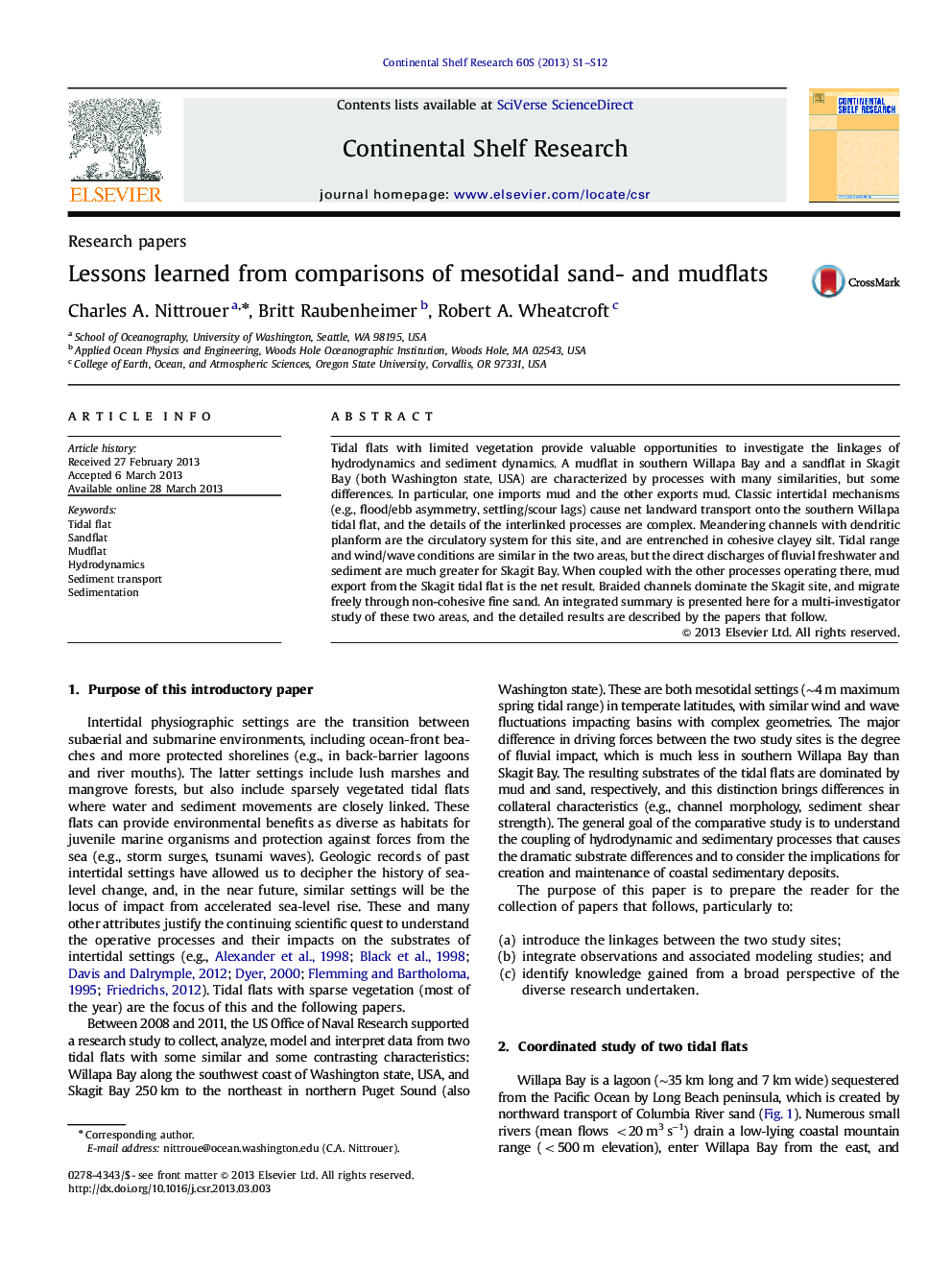| کد مقاله | کد نشریه | سال انتشار | مقاله انگلیسی | نسخه تمام متن |
|---|---|---|---|---|
| 4532153 | 1325100 | 2013 | 12 صفحه PDF | دانلود رایگان |

• Formative processes contrasted for mudflat in Willapa Bay and sandflat in Skagit Bay.
• Mud imported to Willapa flat and exported from Skagit flat.
• Details in papers that follow.
Tidal flats with limited vegetation provide valuable opportunities to investigate the linkages of hydrodynamics and sediment dynamics. A mudflat in southern Willapa Bay and a sandflat in Skagit Bay (both Washington state, USA) are characterized by processes with many similarities, but some differences. In particular, one imports mud and the other exports mud. Classic intertidal mechanisms (e.g., flood/ebb asymmetry, settling/scour lags) cause net landward transport onto the southern Willapa tidal flat, and the details of the interlinked processes are complex. Meandering channels with dendritic planform are the circulatory system for this site, and are entrenched in cohesive clayey silt. Tidal range and wind/wave conditions are similar in the two areas, but the direct discharges of fluvial freshwater and sediment are much greater for Skagit Bay. When coupled with the other processes operating there, mud export from the Skagit tidal flat is the net result. Braided channels dominate the Skagit site, and migrate freely through non-cohesive fine sand. An integrated summary is presented here for a multi-investigator study of these two areas, and the detailed results are described by the papers that follow.
Journal: Continental Shelf Research - Volume 60, Supplement, 15 June 2013, Pages S1–S12